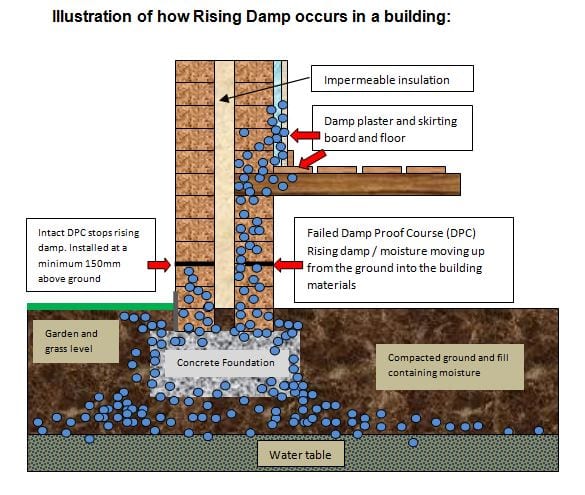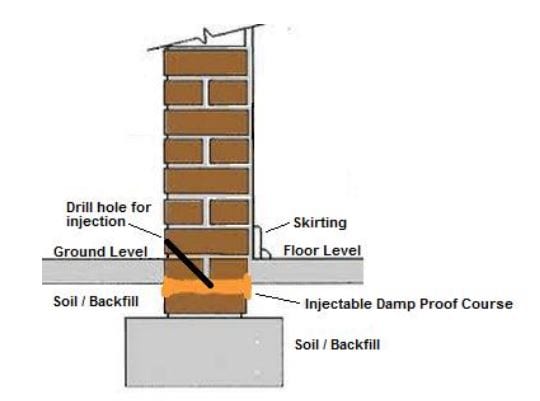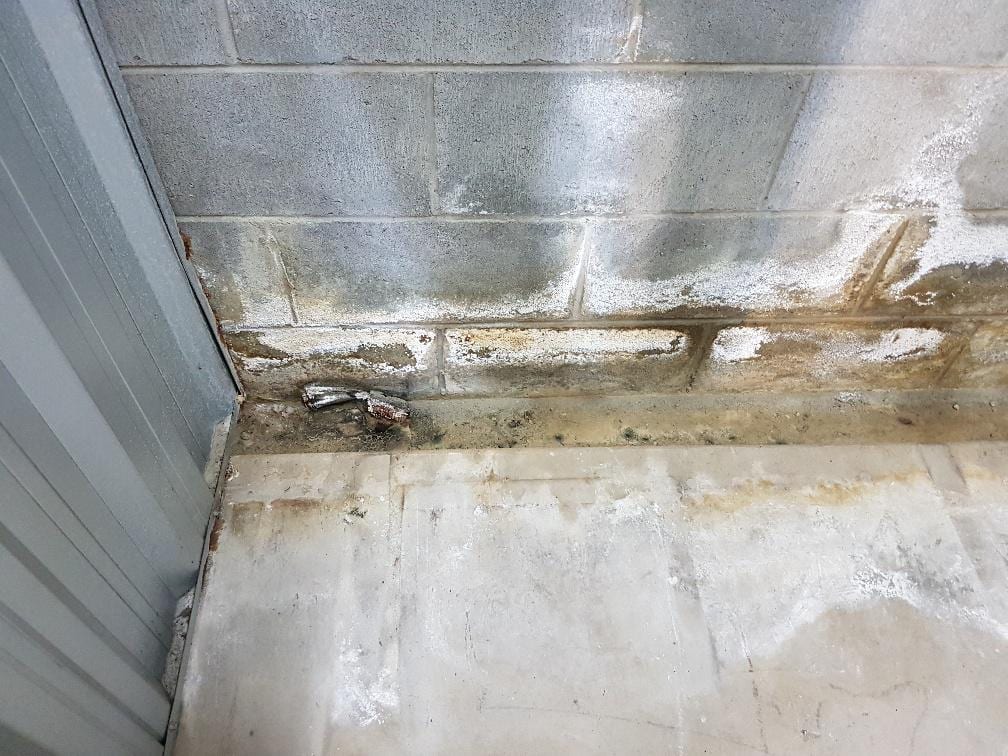Rising Damp Treatment
Rising Damp is a phenomenon where moisture from the ground is wicked up through the masonry and building materials by capillary action, resulting in moisture appearing to rise from the ground.
Rising Damp is one of the many types of water ingress issues our clients face. The issue with rising damp is that it often goes on inside walls undetected for a long time, slowly damaging the structure of buildings. Early visible signs of rising damp may be subtle enough not to raise the alarm of the property owner until the extent of the problem is clearly evidenced by deteriorating stumps, footings, masonry and building bricks.
What are the Common Signs of Rising Damp that you can look out for?
- Tide marks of salts / raised white deposits
- Dark patches on walls that can be damp to touch – Determine that the brickwork/masonry is actually wet and not just the plaster or wallpaper.
- Stained or crumbled plaster, peeling wallpaper and blistering paint around the floor level
- Damp and musty smell.
- Discolouration and black spots of mould
- Decaying timber such as skirting boards, floorboards, floor joists.
- Deterioration of mortar joints
Mould or damp patches are not always visible and you may have hidden mould or damp:
- There is a mouldy/earthy odour
- There is regular condensation indoors
- The home feels regularly humid.
Rising damp problems often occur because a Damp-Proof Course (DPC) has not been installed or that the DPC is faulty due to age or incorrect installation as shown in our illustration.





